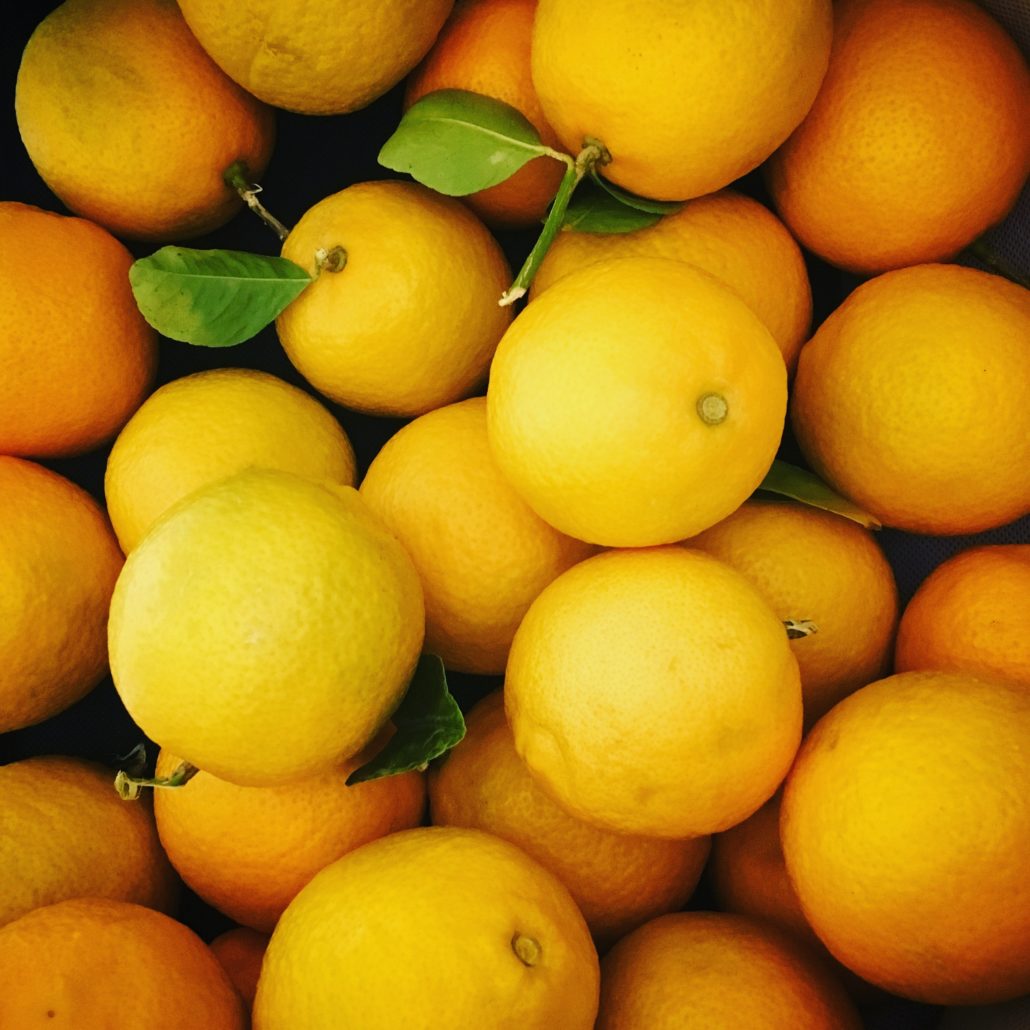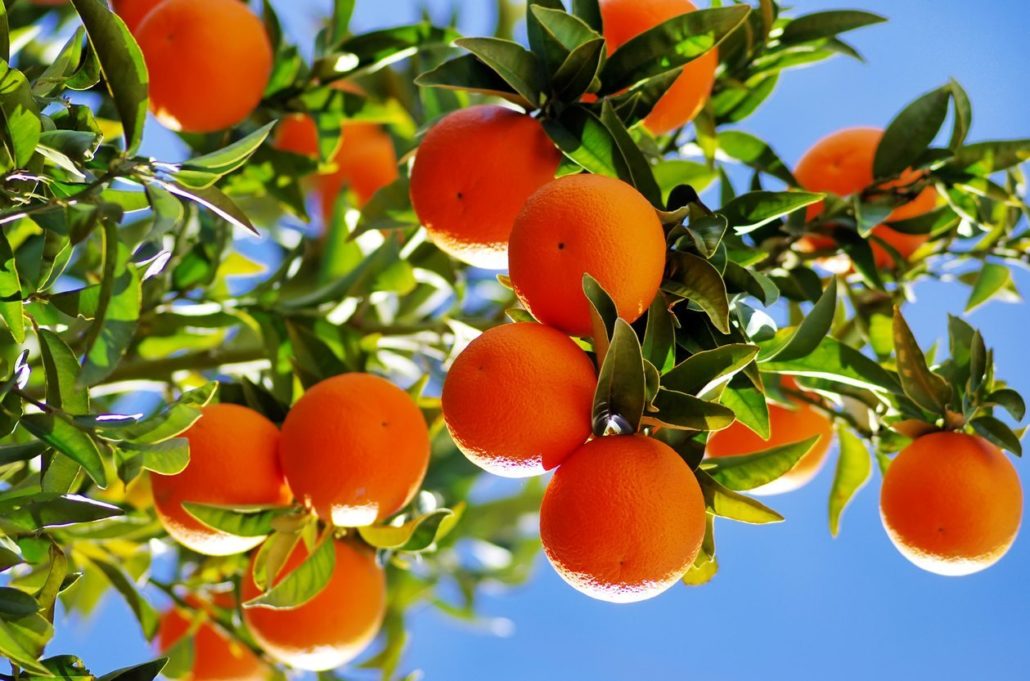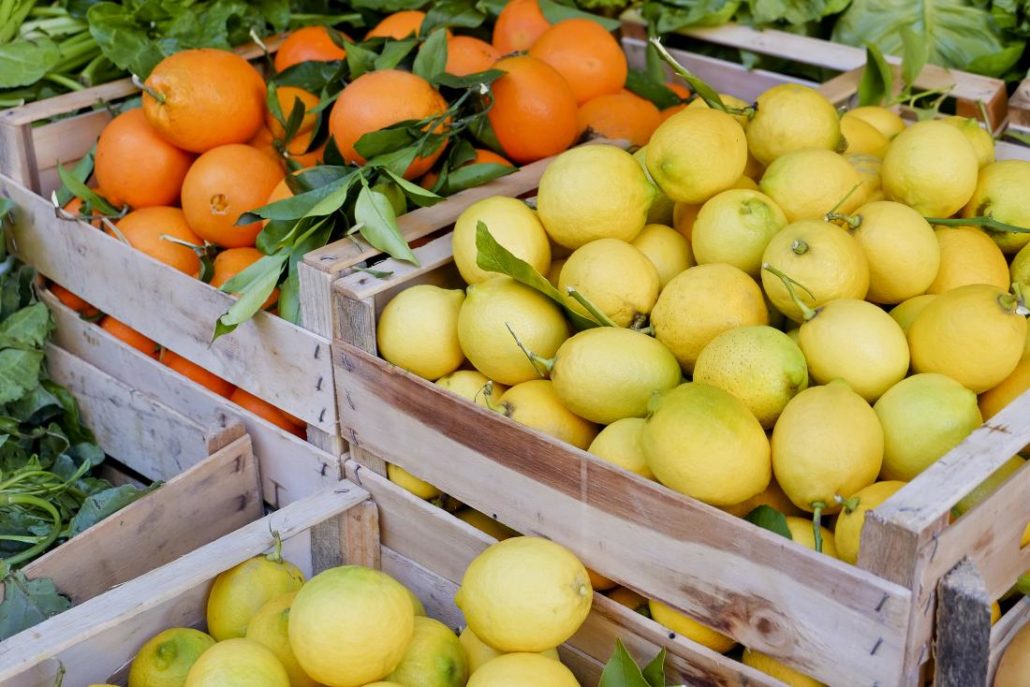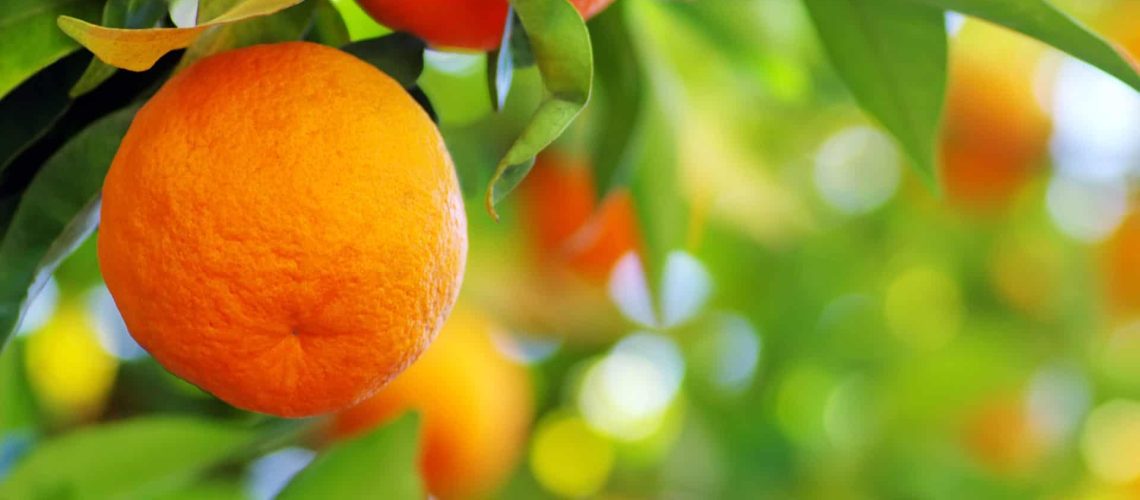By Erik de Vries, Agri Technovation’s Joint CEO
Introduction
Photosynthesis is a process used by plants to convert light energy (sunlight) into chemical energy that can later be released to fuel the plant’s activities. This chemical energy is stored in carbohydrate molecules such as sugars, which are synthesised from carbon dioxide (CO2) and water (H2O). The hydrogen freed by the splitting of water is used in the creation of short-term stores of energy, reduced nicotinamide adenine dinucleotide phosphate (NADPH) and adenosine triphosphate (ATP), the “energy currency” of cells. ATP and NA-DPH are then reduced and removed to form further carbohydrates such as glucose.
Carbohydrates perform numerous roles in fruit trees. They support development of increase fruit growth and rind colour development, and are necessary for growth of other tree organs such as roots and vegetative shoots. A shortage of carbohydrates can result colour, and lack of root growth. Carbohydrate sugars are readily available to plants and can be transported over long distances in the phloem. Sugar carbohydrates can also be made avail-able from stored carbohydrate reserves such as polysaccharides and starch. Polysaccharides and starch serve for the storage of energy which can be made available when sugars are limited, among others. Carbohydrates are essential for plant growth and production throughout the season.

Carbohydrates in citrus
The most common types of carbohydrate in citrus are the sugars sucrose, glucose and fructose, followed by more complex carbohydrate molecules such as starch and polysaccharides. Carbohydrates are produced by photosynthesising leaves (carbohydrate sources) and are transported to non-photosynthetic tree organs such as flowers and roots (carbohydrates sinks) via mass-flow in the phloem. Sucrose is the main translocated carbohydrate form and can be transported over long distances. The transport of carbohydrates relies on mass flow, meaning that accumulation of sucrose in the phloem at the source leaf attracts water osmotically, which creates high turgor pressure in the phloem and a pressure difference between where the sugars are produced and unloaded at the sink for utilisation for growth. A pressure gradient between the leaf and the growing organ drives mass flow of sucrose towards lower turgor pressure at the sinks. The transport of carbohydrates from the leaf can be very rapid (150 cm·h-1) and are regulated by plant hormones such as cytokinin, auxin and gibberellins.
Sugars vs starch / Sink vs source
In citrus seeds, fruit and flowers are the biggest carbohydrate sinks, followed by vegetative shoots and non-photosynthesising tree organs such as roots and the bark and wood. Because sugars can be transported from where they are produced to where they are needed more, carbohydrates can be detected in most organs of a citrus tree. The concentrations of carbohydrates in citrus tissues can change throughout a season because of the effect of temperature and crop load, among others, but generally shows a distinct pattern of accumulation and utilisation throughout the season. In addition to the production of sugars by photosynthesis, sugars can also be made available from stored carbohydrate reserves such as starch.
Starch generally accumulates when more sugars are produced than what is required at that particular stage in the season and because of the evergreen nature of a citrus tree, but can also accumulate at low temperature, or when the phloem is damaged or blocked. Starch reserves can be used during periods when carbohydrate supply by photosynthesis cannot meet the carbohydrate demand by the tree, such as during spring or summer.

Carbohydrate sink strength:
Seeds > fleshy fruit parts > shoots and leaves > cambium > roots > storage
The effect of fruit load or carbohydrates
Leaf and root starch contents are usually significantly higher for low-fruiting citrus trees compared to heavy-fruiting citrus trees. Removal of fruit from the heavy-fruiting trees early in the season can change this pattern of accumulation and result in starch accumulation in the various tree organs and improved return bloom. Winter girdling of vegetative branches can also result in significant accumulation of carbohydrates in leaves above the girdle, and increase the numbers of buds sprouting in spring as well as the numbers of flowers and eventual fruit compared to non-girdled branches with low carbohydrates levels. Starch can accumulate in leaves of low-fruiting trees to so-called ‘toxic’ levels, meaning the increase in size of starch granules result in chloroplast disruption and a loss in green colour of foliage. In the following spring, however the trees flower profusely and regain their green colour, resulting in a heavy crop load. In heavy-fruiting trees, on the other hand, very little starch accumulation occurs in leaves towards winter and trees maintain a green leaf colour with poor flowering in the following season. Interestingly, a similar leaf chlorosis reaction to high starch levels is reported to happen in response to infection with Candidatus Liberibacter asiaticus (Las) in HLB orchards.

Carbohydrates and fruit set
A shortage of carbohydrates is a major cause of flower and fruitlet drop in citrus and has been confirmed as the primary cause of poor fruit set in numerous citrus species.
The growth of a single citrus flower requires ±90 mg glucose. Considering that an adult citrus tree produces on average 50 000 to 70 000 flowers, the total carbohydrate demand by flowers alone can therefore amount to approximately up to 4.0 kg glucose per tree, in a short period of only two to three months. In Valencia trees. Heavy-flowering trees require up to four times more carbohydrates than low-flowering trees.
Apart from photosynthesis, flowers rely heavily on carbohydrate reserves that accumulated in old leaves and in the bark and roots during the previous season. In Valencia trees, approximately two thirds of the total carbohydrate pool used by flowering and spring vegetative shoot growth are supplied by the carbohydrate reserves that were stored in the roots.
Older leaves and roots initially support the supply of carbohydrates to developing flowersring early spring, but if storage carbohydrates are not high enough and eventually depleted, flower development and fruit set will be limited.
Furthermore, newly developing roots and vegetative shoots can’t contribute to the overall energy supply but are additional carbohydrate consumers that demand carbohydrates and compete with flowers for a limited carbohydrate pool. For orange trees, the first vegetative shoot flush in spring is maintained by carbohydrate reserves that accumulated in permanent structural tree organs during the previous season.

Vegetative organs
Too much fruit on the tree can restrict a tree’s capacity to use carbohydrates for root and vegetative shoot growth. Heavy-fruiting trees accumulate most of their carbohydrates in the fruit, while no accumulation occurs in roots. In ‘Washington’ navels for example, root growth was reduced by fruit load, whereas in ‘Valencia’ trees, fruit removal in spring in-creased carbohydrate concentration in roots and resulted in increased root development. In a severe case, an over-cropping of trees resulted in death of feeder roots and tree collapse of heavily-fruiting ‘Murcott’ trees.
Excessive flowering in spring restricts carbohydrate (sugar) allocation to roots, which limits new root growth in “on” trees during spring and possibly contributes to the lack of new vegetative shoot development during summer in ’nadorcott’. In low-fruiting trees, on the other hand, starch accumulates in leaves and roots and this is apparently important for the initiation and maintenance of new growth in the subsequent spring.

Managing carbohydrates in citrus
Knowing the carbohydrate status of your trees at a specific important stage in the season is the critical first step in being able to manage carbohydrates and production. The ITESTTM CARBOHYDRATES analysis program is a new tool with which sugars and starch concentrations in leaves and roots can be accurately and continuously monitored at the proper physiological stage of the crop throughout the season. This can lead to the timely development of management practices that will help producers to ensure optimal plant growth and annual produce. With the ITESTTM CARBOHYDRATES analysis program and the right recommendations of products and management tools, producers can know the carbohydrate status of the tree at different phenological stages in the season and respond timelessly to optimise plant growth and performance and increase production.

Some of the production practices include the following:
– An optimal, integrated nutritional approach:
In chlorophyll, the green pigment of the plant essential for photosynthesis, four nitrogen atoms hold the central magnesium atom in place, and 75% of the nitrogen in a leaf is contained in ribulose-1,5-bisphosphate carboxylase-oxygenase, the first enzyme in photosynthesis. When nitrogen is limiting, this enzyme and chlorophyll are degraded and photosynthesis is reduced, leading to a shortage of carbohydrates.
Phosphorus is required for maintenance of photosynthesis, synthesis and breakdown of carbohydrates, and the transfer of sugars within the plant. It helps plants store and use energy from photosynthesis for growth of all tree organs. Without phosphorous, the energy captured by photosynthesis (ATP) cannot be retained and reused. Potassium plays a critical role in the phloem translocation mechanism and the transport of sugars from the leaf to other tree organs. Potassium is also import-ant in carbohydrate economy of a citrus tree through the influence on the activities of the stomata. Magnesium is an essential constituent of chlorophyll and therefore directly involved in carbohydrate efficiency of a tree because of its role in photosynthesis.
Magnesium also serves an important role as activator of several enzymes such as nitrate reductase and is also involved in carbohydrate metabolism and synthesis of nucleic acids. Calcium is the most abundant mineral element by weight in citrus trees and involved in cell division and cell elongation. In citrus, magnesium and calcium deficiencies are normally associated with a marked increase in starch content because of the lack in activity of the enzyme acid invertase (the enzyme responsible for digestion of starch). The Agri Technovation ITESTTM LEAF and ITESTTM CARBOHYDRATES analyses are critical tools in knowing the nutritional status of your citrus orchard, but should be accompanied with the correct manipulation recommendations and timeous application of fertiliser products and plant growth regulators (PGRs), as recommended by your expert Agri Technovation agronomist.
– Girdling:
Girdling can result in between 25 and 50%increase in starch and total carbohydrate concentration leaves. However, a limitation of carbohydrate supply to the fruitlets can occur while starch levels in the leaves remain high because of slow mobilisation of starch reserves from the leaf to the fruit. Foliar application from the leaf to the fruit. Foliar application of GA3 to flowers and fruitlets mobilises carbohydrates from the leaf (carbohydrate sink). It is important to consult your ITESTTM CARBOHYDRATES analysis and decide whether to girdle or not.
– Harvest management:
Always consult you’r ITESTTM CARBOHYDRATES analysis and include regular maturity indexing. Extending harvesting of the crop by more than two weeks can result in up to a 50% reduction in leaf starch concentration. The best way to avoid this is to try to maintain a high level of carbohydrate reserve status throughout the season, to have carbohydrate levels as high as possible at the time of commercial maturity and to not extend harvesting beyond optimal maturity.
– Hand thinning:
Moderate selective summer or autumn hand thinning can result in a 30% increase in sugar concentration in leaves. An adequate number of fruitlets need to be thinned to achieve the desired carbohydrate spike, but keep in mind to maintain a target crop load in the current season. Your ITESTTM CARBOHYDRATES analysis can help with planning your hand thinning and crop load management strategy.
– Pruning:
Pruning is an excellent method to rejuvenate a citrus tree, increase light penetration and photosynthesis and carbohydrate production. However, it is important to consult your ITESTTM CARBOHYDRATES analysis to make sure that root carbohydrate content is optimal before considering aggressive pruning. Sick or stressed trees do not respond well to pruning. Additionally, severe pruning during flowering in the spring can result in severe regrowth response and can cause excessive fruit drop if carbohydrate levels of the ITESTTM CARBOHYDRATES analysis is low.
– Chemical thinning:
Fruitlet growth rate can be increased through reducing inter-sink competition for carbohydrates through the removal of a part of the developing fruitlets. In this case, auxins can be used as fruitlet thinners and generally, at an early stage of fruit drop, as well as when your ITESTTM CARBOHYDRATES analysis showed low carbohydrate levels.
On the other hand, when planning to increase the carbohydrate sink strength and hence fruit size, without affecting fruit count, the auxins are being used as fruit growth enhancers and generally, later or after the fruit drop period and when your ITESTTM CARBOHYDRATES analysis showed high carbohydrate levels.
Conclusion
There is a definite relationship between carbohydrates and flowering, fruit yield, the consistency of fruit production and growth and general condition of roots. However, there are also other potentially limiting factors to the above, i.e., temperature, water supply, pests and diseases, mineral nutrition, and effect of PGRs that will impact not only on energy supply, but also on production of other plant growth substances and metabolites and fruit production in general.
Excessive emphasis on just one factor is dangerous, as trees are highly complex entities. Nevertheless, in healthy and well-managed citrus orchards, the carbohydrate status at certain important phenological stages is but one of several factors which can be limiting to fruit production.
Optimal carbohydrate status increases the chances of good flowering, good fruit set and fruit quality and the ITESTTM CARBOHYDRATES analysis program is a new tool to help achieve this goal.
For more information contact Agri Technovation on +27 21 300 0543 | info@agritechnovation.co.za or visit www.agritechnovation.co.za





